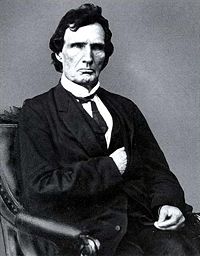Early hairpieces, called toupees and wigs were made from horse-hair, human hair, wool, feathers, buffalo hair, or synthetic, worn on the head for fashion or various other aesthetic and stylistic reasons, including cultural and religious observance. The word wig is short for periwig and first appeared in the English language around 1675.
Some people wear wigs to disguise the fact that they are bald. Actors, on the other hand often wear costume wigs in order to better portray the character they are playing.
Wigs have been worn throughout history, even on the genitals (see merkin).The ancient Egyptians wore them to shield their shaved, hairless heads from the sun. Other ancient cultures, including the Assyrians, Phoenicians, Greeks and Romans, also used wigs. Wigs are principally a Western form of dress -- in the Far East they have rarely been used except in the traditional theatre of China and Japan. Some East Asian entertainers (Japanese Geisha, Korean Kisaeng) wore wigs (Katsura and gache respectively) as part of their traditional costumes. After the fall of the Roman Empire, the use of wigs fell into abeyance in the West for a thousand years until revived in the 16th century as a means of compensating for hair loss or improving one's personal appearance. They also served a practical purpose: the unhygienic conditions of the time meant that hair attracted head lice, a problem that could be much reduced if natural hair were shaved and replaced with a more easily de-loused artificial hairpiece. Fur hoods were also used in a similar preventative fashion.
Royal patronage was crucial to the revival of the wig. Queen Elizabeth I of England famously wore a red wig, tightly and elaborately curled in a "Roman" style while King Louis XIII of France (1601-1643) and King Louis XIV of France (1638-1715) pioneered wig-wearing among men from the 1620s onwards. King Louis XIV of France was also popularly known as The Sun King (in French "Le Roi Soleil"). During his reign he built the Château de Versailles, a large and extravagant royal residence and moved there the court life from Paris. He created an elaborate court style at Versailles. King Louis XIV was dictating men's fashion at the time with his sophisticated style, and his exuberant taste for luxury. [1] Perukes or periwigs for men were introduced into the English-speaking world with other French styles when Charles II was restored to the throne in 1660, following a lengthy exile in France. These wigs were shoulder-length or longer, imitating the long hair that had become fashionable among men since the 1620s. Their use soon became popular in the English court. The London diarist Samuel Pepys recorded the day in 1665 that a barber had shaved his head and that he tried on his new periwig for the first time, but in a year of plague he was uneasy about wearing it:
"3rd September 1665: Up, and put on my coloured silk suit, very fine, and my new periwig, bought a good while since, but darst not wear it because the plague was in Westminster when I bought it. And it is a wonder what will be the fashion after the plague is done as to periwigs, for nobody will dare to buy any haire for fear of the infection? that it had been cut off the heads of people dead of the plague."
Wigs were not without other drawbacks, as Pepys noted on 27 March 1667:
"I did go to the Swan; and there sent for Jervas my old periwig-maker and he did bring me a periwig; but it was full of nits, so as I was troubled to see it (it being his old fault) and did send him to make it clean."
With wigs becoming virtually obligatory garb for men of virtually any significant social rank, wigmakers gained considerable prestige. A wigmakers' guild was established in France in 1665, a development soon copied elsewhere in Europe. Their job was a skilled one as 17th century wigs were extraordinarily elaborate, covering the back and shoulders and flowing down the chest; not surprisingly, they were also extremely heavy and often uncomfortable to wear. Such wigs were expensive to produce. The best examples were made from natural human hair. The hair of horses and goats was often used as a cheaper alternative.
In the 18th century, men's wigs were powdered in order to give them their distinctive white or off-white color. Contrary to popular belief, women in the 18th century did not wear wigs, but wore a coiffure that we nowadays would call hair-extentions. The top of their natural hair was being enriched by fake hair, or hair not of their own. Women mainly powdered their hair grey, or blue-ish grey, and from the 1770's onwards never bright white like men. Wig powder was made from finely ground starch that was scented with orange flower, lavender, or orris root. Wig powder was occasionally colored violet, blue, pink or yellow, but was most often used as off-white. Powdered wigs (men) and powdered natural hair with extentions (women) became an essential for full dress occasions and continued in use until almost the end of the 18th century. Powdering wigs and extentions was messy and inconvenient and the development of the naturally white or off-white powderless wig (made of horsehair) for men is no doubt what has made the retention of wigs in everyday court dress a practical possibility. By the 1780s, young men were setting a fashion trend by lightly powdering their natural hair, like women already did from the 1770's onwards. Often they would use their own hair and not a wig. After 1790, both wigs and powder were reserved for older more conservative men, and were in use by ladies being presented at court. After 1790 women hardly powdered their hair anymore. In 1795, the English government levied a tax of hair powder of one guinea per year. This tax effectively caused the demise of both the fashion for wigs and powder by 1800.








